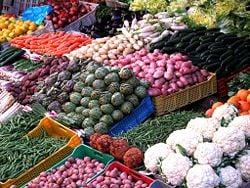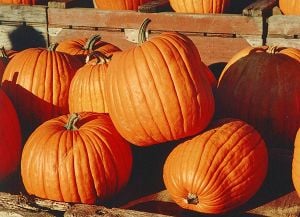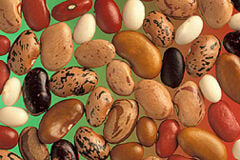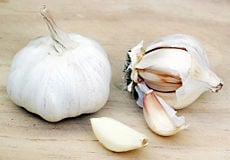Vegetable
Vegetable in a general and common sense refers to any edible part (root, leaves, stem, flowers, seeds, bulbs, fruit) of herbaceous plants consumed as food by humans, as well as to the plant itself that is cultivated for an edible part. However, vegetable is a culinary term more so than one of scientific classification, and its use is somewhat arbitrary and subjective. Though the exceptions are many, in general, vegetables are thought of as being savory and not sweet.
Mushrooms, though belonging to the biological kingdom fungi, are also commonly considered vegetables. Nuts, grains, herbs, and spices are normally not considered vegetables.
Vegetables are an essential part of good nutrition. Longevity studies have shown that correlates of long life include consumption of fruits, vegetables, and whole grains, and a World Health Organization (2005) statement on diet recommends increased consumption of fruits and vegetables. Good health requires individuals to exhibit discipline in their eating habits.
Since “vegetable” is not a botanical term, there is no contradiction in referring to a plant part as a fruit while also being considered a vegetable. Given this general rule of thumb, vegetables can include leaves (lettuce), stems (asparagus), roots (carrots), flowers (broccoli), bulbs (garlic), seeds (peas and beans), and of course the botanical fruits like cucumbers, squash, pumpkins, and capsicums.
The merit of the ongoing question, "is it a fruit, or is it a vegetable?," has even found its way before the bench of the United States Supreme Court which ruled unanimously in Nix v. Hedden, 1883, that a tomato is a vegetable for the purposes of 1883 Tariff Act even though botanically, a tomato is a fruit.
In a broad, historical, and sometimes literary sense, vegetable also has been used to refer to any plant or plant part, in the sense of "vegetable matter" or "vegetable kingdom."
Commercial production of vegetables is a branch of horticulture called olericulture. Vegetarianism is the practice of not consuming meat, with or without the use of other animal derivatives, such as dairy products or eggs.
Etymology
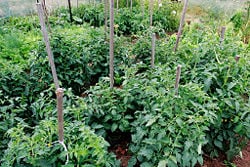
Vegetable comes from Latin vegetabilis (animated) and from vegetare (enliven), which is derived from vegetus (active), in reference to the process of a plant growing. This in turn derives from the Proto-Indo-European base *weg- or *wog-, which is also the source of the English wake, meaning "not sleep."
The word vegetable was first recorded in print in English in the fourteenth century. The meaning of "plant grown for food" was not established until the eighteenth century (Ayto 1993).
Vegetables in the diet
Vegetables are eaten in a variety of ways as part of main meals and as snack food.
The nutrient content of different types varies considerably. With the exception of pulses (annual leguminous crops yielding from one to twelve grains or seeds within a pod, such as protein beans, chickpeas, lima beans, and garden peas), vegetables provide little protein and fat (Woodruff 1995, Whitaker 2001).
Vegetables contain water soluble vitamins like vitamin B and vitamin C, fat-soluble vitamins, including vitamin A and vitamin D, and also contain carbohydrates and minerals.
Colorful vegetables (as well as colorful fruits) are an important source of trace chemicals collectively called phytochemicals. One of the principal classes of phytochemicals are polyphenol antioxidants, chemicals which are known to provide certain health benefits to the cardiovascular system and immune system. One rigorously tested phytochemical is zeaxanthin, a yellow-pigmented carotenoid present in many yellow and orange fruits and vegetables. Repeated studies have shown a strong correlation between ingestion of zeaxanthin and the prevention and treatment of age-related macular degeneration (AMD) (Seddon et al. 1994).
Consumption of vegetables is often advanced as especially important for good nutrition. As such, personal responsibility and discipline are required in one's eating habits. One example of such discipline is seen in the Book of Daniel in the Bible. Daniel and his friends were captured by the king of Babylon during an invasion of Israel. Selected as court servants, they were to share in the king's fine foods and wine. But they objected, preferring vegetables (pulses) and water in accordance with their Jewish dietary restrictions. The king's chief steward reluctantly agreed to a trial. Daniel and his friends received their diet for 10 days and were then compared to the king’s men. Appearing healthier, they were allowed to continue with their diet.
Color in vegetables
The green color of leafy vegetables is due to the presence of the green pigment chlorophyll. Chlorophyll is affected by pH and changes to olive green in acid conditions, and bright green in alkaline conditions. Some of the acids are released in steam during cooking, particularly if cooked without a cover.
The yellow/orange colors of fruits and vegetables are due to the presence of carotenoids, which are also affected by normal cooking processes or changes in pH.
The red/blue coloring of some fruits and vegetables (e.g. blackberries and red cabbage) are due to anthocyanins, which are sensitive to changes in pH. When pH is neutral, the pigments are purple; when acidic, red; and when alkaline, blue. These pigments are very water soluble.
Storage of vegetables
Potatoes and other root vegetables should be stored in a dark, cool, and dry place to prevent mold, greening, and sprouting.
During storage leafy vegetables lose moisture and vitamin C degrades rapidly. They should be stored for as short a time as possible in a cool place in a container, such as a plastic bag.
Many root vegetables can be stored through winter in a root cellar. Care should be taken in understanding the properties and vulnerabilities of the particular roots to be stored. Many can last through to early spring and be nearly as nutritious as when fresh.
List of vegetables
This is a list of vegetables in the culinary sense, which means it includes some botanical fruits like pumpkins and does not include herbs, spices, cereals, and most culinary fruits and culinary nuts. Some culinary vegetables (seaweeds like nori) are not even members of the plant kingdom.
A vegetable can be any of the major plant parts—root, stem, leaf, flower, fruit, or seed. Vegetables are usually eaten during the main part of a meal while culinary fruits are usually sweet and eaten as desserts, snacks, or juices. There are often exceptions, e.g. vegetables can be used in desserts such as sweet potato pie, sweet green tomato pie, and sweet eggplant pie. Vegetables are also used in vegetable juices.
Western Brassicas
- Broccoli (Brassica oleracea Italica group)
- Brussels sprout (Brassica oleracea Gemmifera group)
- Cabbage (Brassica oleracea Capitata group)
- Cauliflower (Brassica oleracea Botrytis group)
- Kale (Brassica oleracea Acephala group)
- Rapini (Brassica rapa var. ruvo)
Asian Brassicas
- Kai-lan (Brassica rapa var. alboglabra)
- Bok choy (also spelt Bok choi)(Brassica rapa var. chinensis) (Brassica rapa var. pekinensis)
- Komatsuna (Brassica rapa var. perviridis)
- Mizuna greens (Brassica rapa var. nipposinica)
- Oriental mustard (Brassica juncea)
Leafy and salad vegetables
- Amaranth (Amaranthus cruentus)
- Arugula (Eruca sativa)
- Bitterleaf (Vernonia calvoana)
- Catsear (Hypochaeris radicata)
- Celtuce (Lactuca sativa var. asparagina)
- Ceylon spinach (Basella alba)
- Chicory (Cichorium intybus)
- Chinese Mallow (Malva verticillata)
- Chrysanthemum (Chrysanthemum coronarium)
- Corn salad (Valerianella locusta)
- Cress (Lepidium sativum)
- Dandelion (Taraxacum officinale)
- Endive (Cichorium endivia)
- Epazote (Chenopodium ambrosioides)
- Fat hen (Chenopodium album)
- Fiddlehead (Pteridium aquilinum, Athyrium esculentum)
- Fluted pumpkin (Telfairia occidentalis)
- Golden samphire (Inula crithmoides)
- Good King Henry (Chenopodium bonus-henricus)
- Iceplant (Mesembryanthemum crystallinum)
- Kuka (Adansonia spp.)
- Lagos bologi (Talinum fruticosum)
- Land cress (Barbarea verna)
- Lettuce (Lactuca sativa)
- Lizard's tail (Houttuynia cordata)
- Melokhia (Corchorus olitorius, Corchorus capsularis)
- Mustard (Sinapis alba)
- New Zealand Spinach (Tetragonia tetragonioides)
- Orache (Atriplex hortensis)
- Radicchio (Cichorium intybus)
- Samphire (Crithmum maritimum)
- Salad rape (Brassica napus)
- Sea beet (Beta vulgaris subsp. maritima)
- Seakale (Crambe maritima)
- Sierra Leone bologi (Crassocephalum spp.)
- Soko (Celosia argentea)
- Sorrel (Rumex acetosa)
- Spinach (Spinacia oleracea)
- Summer purslane (Portulaca oleracea)
- Swiss chard (Beta vulgaris subsp. cicla var. flavescens)
- Watercress (Nasturtium officinale)
- Water spinach (Ipomoea aquatica)
- Winter purslane (Claytonia perfoliata)
Fruiting and flowering vegetables
- Armenian cucumber (Cucumis melo Flexuosus group)
- Eggplant or Aubergine (Solanum melongena)
- Avocado (Persea americana)
- Bitter melon (Momordica charantia)
- Caigua (Cyclanthera pedata)
- Cayenne pepper (Capsicum frutescens)
- Chayote (Sechium edule)
- Chile pepper (Capsicum annuum Longum group)
- Cucumber (Cucumis sativus)
- Globe Artichoke (Cynara scolymus)
- Luffa (Luffa acutangula, Luffa aegyptiaca)
- Malabar gourd (Cucurbita ficifolia)
- Marrow (Cucurbita pepo)
- Parwal (Trichosanthes dioica)
- Perennial cucumber (Coccinia grandis)
- Pumpkin (Cucurbita maxima, Cucurbita pepo)
- Snake gourd (Trichosanthes cucumerina)
- Sweetcorn (Zea mays)
- Sweet pepper (Capsicum annuum Grossum group)
- Tinda (Praecitrullus fistulosus)
- Tomato (Lycopersicon esculentum)
- Tomatillo (Physalis ixocarpa, Physalis philadelphica)
- Winter melon (Benincasa hispida)
- West Indian gherkin (Cucumis anguria)
- Zucchini or Courgette (Cucurbita pepo)
Podded vegetables
- American groundnut (Apios americana)
- Asparagus pea (Psophocarpus tetragonolobus)
- Azuki bean (Vigna angularis)
- Black-eyed pea (Vigna unguiculata subsp. unguiculata)
- Chickpea (Cicer arietinum)
- Drumstick (Moringa oleifera)
- Dolichos bean (Lablab purpureus)
- Fava bean (Vicia faba)
- French bean (Phaseolus vulgaris)
- Guar (Cyamopsis tetragonoloba)
- Horse gram (Macrotyloma uniflorum)
- Indian pea (Lathyrus sativus)
- Lentil (Lens culinaris)
- Lima bean (Phaseolus lunatus)
- Moth bean (Vigna acontifolia)
- Mung bean (Vigna radiata)
- Okra (Abelmoschus esculentus)
- Pea (Pisum sativum)
- Peanut (Arachis hypogaea)
- Pigeon pea (Cajanus cajan)
- Rice bean (Vigna umbellatta)
- Runner bean (Phaseolus coccineus)
- Soybean (Glycine max)
- Tarwi (Lupinus mutabilis)
- Tepary bean (Phaseolus acutifolius)
- Urad bean (Vigna mungo)
- Velvet bean (Mucuna pruriens)
- Yardlong bean (Vigna unguiculata subsp. sesquipedalis)
Bulb and stem vegetables
- Asparagus (Asparagus officinalis)
- Cardoon (Cynara cardunculus)
- Celeriac (Apium graveolens var. rapaceum)
- Celery (Apium graveolens)
- Elephant Garlic (Allium ampeloprasum var. ampeloprasum)
- Florence fennel (Foeniculum vulgare var. dulce)
- Garlic (Allium sativum)
- Kohlrabi (Brassica oleracea Gongylodes group)
- Kurrat (Allium ampeloprasum var. kurrat)
- Leek (Allium porrum)
- Nopal (Opuntia ficus-indica)
- Onion (Allium cepa)
- Prussian asparagus (Ornithogalum pyrenaicum)
- Rhubarb (Rheum x cultorum)
- Shallot (Allium cepa Aggregatum group)
- Welsh onion (Allium fistulosum)
- Wild leek (Allium tricoccum)
Root and tuberous vegetables
- Ahipa (Pachyrhizus ahipa)
- Arracacha (Arracacia xanthorrhiza))
- Bamboo shoot
- Beetroot (Beta vulgaris subsp. vulgaris)
- Black cumin (Bunium persicum)
- Broadleaf arrowhead (Sagittaria latifolia)
- Canna (Canna spp.)
- Carrot (Daucus carota)
- Cassava (Manihot esculenta)
- Chinese artichoke (Stachys affinis)
- Daikon (Raphanus sativus Longipinnatus group)
- Earthnut pea (Lathyrus tuberosus)
- Ensete (Ensete ventricosum)
- Ginger (Zingiber officinale)
- Gobo (Arctium lappa)
- Hamburg parsley (Petroselinum crispum var. tuberosum)
- Jerusalem artichoke (Helianthus tuberosus)
- Jícama (Pachyrhizus erosus)
- Lotus root (Nelumbo nucifera)
- Maca (Lepidium meyenii)
- Malanga (Xanthosoma sp.)
- Mashua (Tropaeolum tuberosum)
- Mauka (Mirabilis extensa)
- New Zealand rock lily (Arthropodium cirratum)
- Oca (Oxalis tuberosa)
- Parsnip (Pastinaca sativa)
- Pignut (Conopodium majus)
- Plectranthus (Plectranthus spp.)
- Prairie turnip (Psoralea esculenta)
- Radish (Raphanus sativus)
- Rutabaga (Brassica napus Napobrassica group)
- Salsify (Tragopogon porrifolius)
- Scorzonera (Scorzonera hispanica)
- Skirret (Sium sisarum)
- Taro (Colocasia esculenta)
- Ti (Cordyline fruticosa)
- Tigernut (Cyperus esculentus)
- Turnip (Brassica rapa Rapifera group)
- Ulluco (Ullucus tuberosus)
- Wasabi (Wasabia japonica)
- Water chestnut (Eleocharis dulcis)
- Yacón (Smallanthus sonchifolius)
- Yam (Dioscorea spp.)
Seaweed

- Aonori (Monostroma spp., Enteromorpha spp.)
- Carola (Callophyllis variegata)
- Dabberlocks (Alaria esculenta)
- Dulse (Palmaria palmata)
- Hijiki (Hizikia fusiformis)
- Kombu (Laminaria japonica)
- Mozuku (Cladosiphon okamuranus)
- Nori (Porphyra spp.)
- Ogonori (Gracilaria spp.)
- Sea grape (Caulerpa spp.)
- Sea lettuce (Ulva lactuca)
- Wakame (Undaria pinnatifida)
ReferencesISBN links support NWE through referral fees
- Ayto, J. 1993. Dictionary of Word Origins. New York: Arcade Publishing. ISBN 1559702141.
- Seddon, J. M. U. A. Ajani, R. D. Sperduto, et al. 1994. Dietary carotenoids, vitamins A, C, and E, and advanced age-related macular degeneration. Eye Disease Case-Control Study Group. JAMA 272:1413-1420.
- Whitaker, J. 2001. Reversing Diabetes. Warner Books. ISBN 0446676586.
- Woodruff, S. 1995. Secrets of Fat-Free Cooking. Avery. ISBN 0895296683.
- World Health Organization (WHO). 2005. Healthy diet statement World Health Organization. Retrieved December 18, 2007.
Credits
New World Encyclopedia writers and editors rewrote and completed the Wikipedia article in accordance with New World Encyclopedia standards. This article abides by terms of the Creative Commons CC-by-sa 3.0 License (CC-by-sa), which may be used and disseminated with proper attribution. Credit is due under the terms of this license that can reference both the New World Encyclopedia contributors and the selfless volunteer contributors of the Wikimedia Foundation. To cite this article click here for a list of acceptable citing formats.The history of earlier contributions by wikipedians is accessible to researchers here:
The history of this article since it was imported to New World Encyclopedia:
Note: Some restrictions may apply to use of individual images which are separately licensed.

